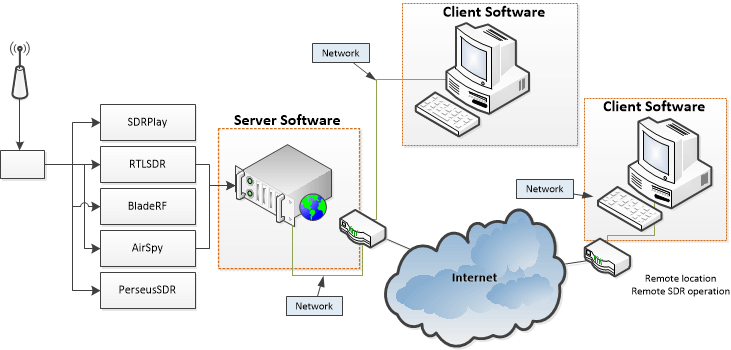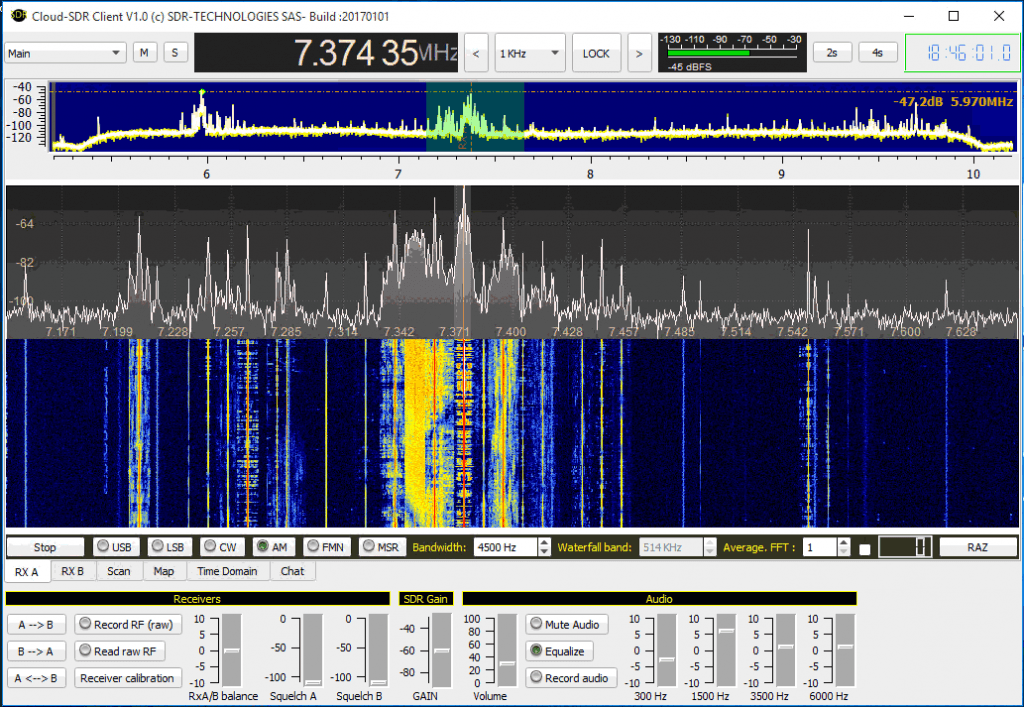Cloud-SDR Releases New Client and Server Software for the RTL-SDR
Cloud-SDR is a company that aims to make using SDR over the cloud/network/internet easier. It allows you to set up a remote SDR server that you can access from anywhere. Previously Cloud-SDR was still in development, but now we recently received mail from Cloud-SDR programmer Sylvain that the client and server software has just been released for the RTL-SDR. It appears that it also currently supports the Airspy, BladeRF, SDRplay and PerseusSDR.
The email reads:
I am pleased to inform you that we have just released two softwares compatible with your devices :
- The Cloud-SDR free client, a windows + Linux (to be released soon) client able to run locally RTL-SDR devices (check the news/turorials, we have featured several times dongles from your blog)
- The Cloud-SDR streaming server (codenamed SDRNode) , a windows + Linux (to be released soon) multi-user configurable streaming server.
SDRNode is a commercial software but an evaluation version is already available. Both softwares can be downloaded from our store after registration.
Source code for the drivers are already released as open source software through our GitHub repo: https://github.com/cloud-sdr
You can find more details here :

To download the software you must register an account with them at https://store.cloud-sdr.com/my-account. The client is free but the server costs 110 euros for personal and hobby usage, although a 30 day trial version is available. Currently only the Windows Client and Server are available, but they write that Linux should be available soon.
We tested the software out with an RTL-SDR V3. The client installation process was a simple wizard and after installation we launched the Cloud-SDR client by opening the shortcut “cSDRc” in the Start Menu. We found that the hardware needed to be plugged in first for the client to recognize it. The client is basic, but can already demodulate USB/LSB/CW/AM/FMN without trouble. It also has some interesting features:
- Dual channel receiver: RXA and RXB are two totally independent receivers;
- Geographic integration: Display on map beacons, ADS-B reported airliners, known HF broadcast stations or any geo-localized information coming from the SDRNode server;
- GPS compatibility: plug a GPS receiver to your computer and track your location on the map, record signals with your position for later processing (coverage mapping etc.); display the UTC time;
- Digital Terrain Elevation: See the terrain elevation around your position, or in the direction of the antenna directly on the map (requires to download the free SRTM3 files from NASA, with 90m resolution);
- MP3 audio recording: record to mp3 the demodulated streams to reduce disk requirements;
- Chat with other users connected to the SDRNode Group: when used as a remote client for the SDRNode streaming server, you can interact with other users with messages or station spotting;
- Time-domain analysis: the MSR mode enables analysis of any sub-band and displays in real time the time domain signals of the selected spectrum portion. This sub-band can also be recorded (with geographic position if GPS is connected) and processed with provided MATLAB®.

Next we tested the evaluation version of the SDR-Node server software on a remote laptop with an RTL-SDR connected. Again installation was easy, just follow the wizard after ordering the evaluation version. SDR-Node installs itself as a Windows service which starts up automatically on boot. To set up the Node we followed the guide shown in the video below. To connect with the client you need to know the IP address of the remote computer, the port is 8080, and the certificate is displayed on the server PC SDR-Node dashboard. We note that we also had to disable the Windows firewall to get it to connect, but it should be possible to also add SDR-Node to the firewall whitelist.
When streaming it appears that only 1/4 of the SDR sample rate can only be sent over the network. There are also compression options which can be used on slower networks or the internet to reduce bandwidth. Using the interface while in network mode was slightly laggy, but the waterfall and audio was smooth.
Overall everything worked as expected and it looks to be a very useful tool. More information is available at cloud-sdr.com. Some already existing alternative remote SDR streaming software that supports the RTL-SDR includes rtl_tcp, the SDR Console V2 server, OpenWebRX and ShinySDR.